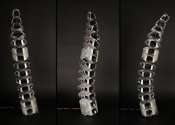Kirigami-inspired wind steering to cool sweltering urban canyons, improve ventilation
Researchers at Princeton's engineering school have found that placing a specially designed lid over a box can dramatically increase the airflow from wind blowing across the upper surface. It is not just a parlor trick. The ...
Mar 21, 2024
0
38









